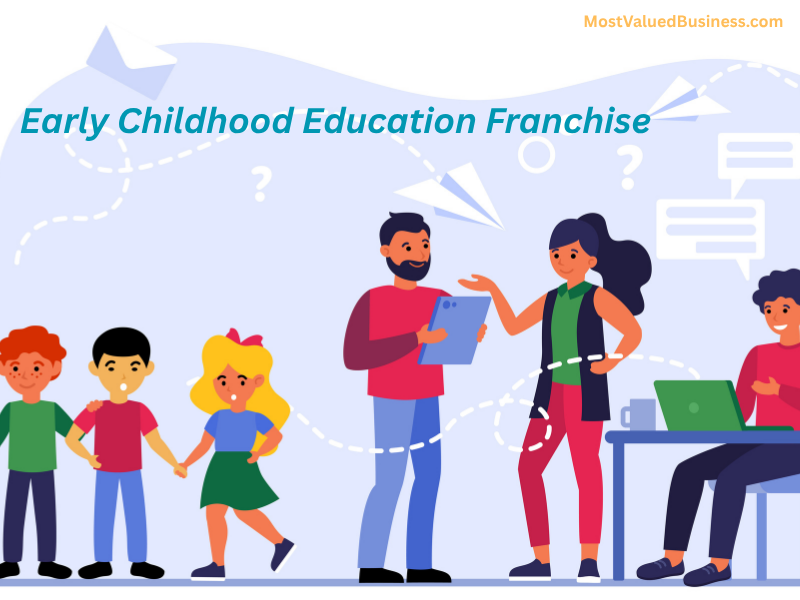Investing in an Early Childhood Education Franchise: a Practical Buyer’s Playbook
Buying into an early childhood education franchise is more than a business decision—it’s a commitment to children, families, and community standards.
The model combines steady, recurring revenue with regulatory complexity and high operational responsibility. This guide gives you a step-by-step, actionable road map for evaluating opportunities, building realistic financials, and avoiding common pitfalls. Use it as your due diligence checklist before signing anything.
Why an early childhood education franchise can be a smart buy
There are three straightforward reasons investors look at this sector:
- Predictable demand. Families need childcare year after year, and many countries support parental employment with subsidies or tax incentives.
- Recurring revenue. Enrolments provide a stable monthly income once occupancy reaches healthy levels.
- Operational leverage. A proven curriculum, standardized policies, and central marketing reduce trial-and-error compared to a solo start-up.
But demand alone isn’t a green light. The sector is regulated, staff-dependent, and reputation-driven. That’s why rigorous due diligence matters.
Essential questions to answer before you invest
Use these seven questions as your minimum screening tool.
1. Is the curriculum evidence-based and locally compliant?
Ask for documented alignment with national or regional early-years frameworks and independent evaluations where available. A curriculum that’s both research-backed and adaptable to local regulations reduces legal risk and improves enrolment messaging.
2. What regulatory support does the franchisor provide?
Find out whether the franchisor helps with licensing applications, compliance checklists, safety audits, and reporting templates. If support is limited to a single page of guidance, you’ll carry most of the regulatory burden yourself.
3. How does the franchisor handle staff training and retention?
Teacher quality equals centre reputation. Confirm the scope and frequency of initial training, ongoing professional development, mentoring, and access to recruitment pipelines. High staff churn is a major red flag.
4. What are the true start-up and ongoing costs?
Build a 24-month cash-flow model with line items for: franchise fee, fit-out, play equipment, outdoor safety surfacing, payroll, insurance, software subscriptions, and contingency for delayed enrolments. Include royalty and marketing fund contributions.
5. How fast can you reach viable occupancy?
Franchisors often quote “average” occupancy — ask for the full distribution (fastest, median, slowest) and speak with individual operators in comparable territories to get realistic ramp-up timelines.
6. Does the franchisor control supply purchases and at what price?
Check whether compulsory suppliers exist and compare their prices. If the franchisor requires purchases through a single vendor at a premium, verify those costs against the open market.
7. What are the exit rules?
Some franchisors restrict transfer or charge high approval fees. If you might sell later, confirm transfer conditions and typical resale values for existing centers.
Operational details that matter (but are often overlooked)
- Facilities and outdoor space: A safe, fenced play area and convenient parent drop-off are essential for both licensing and marketability.
- Health and safeguarding systems: Robust policies for illness, reporting, and staff background checks protect children and your license.
- Parent communication platform: A reliable app that shares daily reports and progress notes increases retention and helps referrals.
- Local partnerships: Ties with primary schools, medical clinics, and employer HR teams can accelerate occupancy and corporate contracts.
- Technology: Child management systems, digital enrolment, and automated billing reduce administrative overhead and errors.
Financial modeling: the conservative approach
Don’t use the franchisor’s “optimistic case” as your base model. Build three scenarios—conservative, realistic, and optimistic—and stress-test for:
- Delayed licensing;
- Recruitment gaps;
- Lower-than-expected enrolment in months 3–9; and
- Increases in wage or compliance costs.
Key metrics to project monthly: occupancy %, average fee per child, staff-to-child ratio costs, and break-even occupancy.
Lenders and accountants prefer to see a model that stresses the downside.
Red flags to walk away from
- Franchisor refuses to share verified franchisee financials.
- Required purchases from proprietary suppliers with opaque pricing.
- High franchisee turnover or frequent terminations.
- Minimal or one-off training packages that lack ongoing professional development.
- Vague territorial protections or broad national accounts allowed them to undercut local centers.
Due diligence checklist (actionable)
Before committing, complete these steps:
- Request the franchise disclosure and operations manual. Read with a franchise lawyer.
- Speak to at least three franchisees in territories similar to yours; ask about occupancy, staffing, and real monthly costs.
- Visit two operating centers (mystery shop and observe operations).
- Obtain supplier and equipment quotes for fit-out and consumables.
- Build a 24-month cash flow with conservative assumptions.
- Confirm licensing timelines with your local regulator and build those dates into the model.
- Check insurance requirements and obtain preliminary quotes.
Financing and exit planning
Many lenders favor childcare franchises due to their recurring revenue and lower seasonality compared to other retail businesses. Ask the franchisor for lender references and model debt-service scenarios. Also, confirm any resale approvals and pre-emptive transfer fees that could affect the center’s marketability down the line.
KPIs that prove both impact and profitability
Trackable metrics turn good intentions into verifiable performance.
At a minimum, monitor occupancy rate, retention (both monthly and annual), average fee per child, and revenue per available place—these metrics show whether demand and pricing sustain your model. Equally important are operational KPIs, including staff turnover, staff-to-child ratios, time-to-fill vacancies, and results from compliance or quality audits.
Don’t forget parent-facing measures such as Net Promoter Score (NPS), enrolment waitlist length, and simple learning-outcome indicators that demonstrate educational value.
Finally, link marketing metrics (customer acquisition cost and lifetime value) to financial breakeven targets so you can see how marketing spend, quality of care, and staffing stability combine to drive long-term center value.
Quick value-boosting tactics for new owners
- Offer wrap-around care (before/after school) to increase utilization.
- Run employer partnership programs to secure bulk enrolments.
- Use a parent app to share daily updates and learning highlights — retention rises when parents see evidence of progress.
- Maintain a documented evidence library (photos, assessment snapshots) to demonstrate impact during inspections and sales pitches.
Conservative Numbers, Strong People, and Real Results
An early childhood education franchise can be both a mission-driven and financially attractive investment—but only when you evaluate curriculum quality, regulatory support, staff training, and the real economics with rigor. Use conservative forecasting, speak to existing operators, and insist on transparent supplier pricing. If the franchisor’s systems, training, and local lead support are strong, a well-run center can deliver stable returns and lasting community impact.
Note: Sponsored Blog Post
Read Also:




